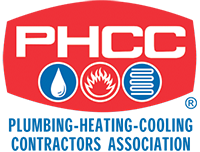
A steaming cup of hot chocolate, a cozy blanket, a good book, all the things we look for on cold, wintery days, even in the hot, summery state of Texas! Sudden temperature drops can mean maintaining a comfortable home becomes a top priority. Sometimes, a good blanket just isn’t enough. Unlike regions with prolonged winters, Texas homes are typically designed for warmer climates, leaving many residents vulnerable to challenges like inefficient heating and plumbing issues during cold snaps.
Heating and plumbing systems are the backbone of winter comfort. When these systems work in harmony, they can keep your home warm, safe, and energy-efficient while protecting against costly issues such as frozen pipes or overworked furnaces. This guide provides actionable tips for balancing heating efficiency and plumbing health, ensuring both systems are well-maintained and ready for Texas winters.
The Relationship Between Heating and Plumbing Systems
All the systems in your body must work together to function at your fullest capacity. You can think of the inner workings of your home the same way. Your HVAC and plumbing systems are more interconnected than you might realize. Efficient heating helps maintain consistent indoor temperatures, reducing the risk of pipes freezing. Leaks or water pressure issues can strain water heaters and other plumbing components that rely on the HVAC systems to work properly. By coordinating the maintenance of these systems, you can enhance your overall home comfort, save energy, and prevent costly repairs.
—
Ensuring HVAC Efficiency During Winter
A well-maintained HVAC system is essential for keeping your home comfortable while reducing energy costs. Here are some ways to keep your HVAC system in top shape so you can always rely on it when you need it.
1. Service Your Furnace Annually
All different aspects of your home require maintenance, from the regular sweep of the floors to roof inspections. Your HVAC is no different! Regular maintenance ensures that your heating system runs efficiently. It is always a good idea to schedule a professional inspection and cleaning before winter begins. Also, replace or clean filters every 1-3 months to maintain airflow and improve air quality. Along those same lines, check the furnace’s blower motor and thermostat regularly for optimal operation.
2. Seal Air Leaks
As well as making you chilly when the cold sets in, drafts can cause uneven heating and force your HVAC system to work harder. To prevent drafts from creeping in, use weatherstripping and caulk to seal gaps around windows, doors, and other entry points. Insulate ductwork in unheated spaces to prevent heat loss as well.
3. Upgrade to a Programmable or Smart Thermostat
Smart home systems aren’t all fun and games (i.e. asking your Smart home system to tell you a joke). Smart thermostats can also help regulate indoor temperatures efficiently, saving energy without sacrificing comfort. With these systems, you can program lower temperatures during the night or when you’re away to reduce heating costs. Using zoning features to direct heat to specific areas of your home, especially rooms with vulnerable plumbing.
4. Maintain Proper Humidity Levels
Dry winter air can lead to discomfort and strain on your HVAC system. Use a humidifier to maintain indoor humidity between 30–50%. Proper humidity reduces static electricity, prevents wood furniture from cracking, and allows your heating system to work more effectively.
—
Protecting Your Plumbing System in Winter
Texans themselves might feel like they aren’t built for the cold. If that’s true, then your homes especially require preparation to get through the cold spells. Texas homeowners often face plumbing challenges during unexpected freezes. Preventative measures can help safeguard your pipes and water systems.
1. Insulate Pipes in Vulnerable Areas
Pipes in unheated spaces, such as garages, attics, or crawl spaces, are most at risk of freezing. For more information on what to do to prevent or react to frozen pipes, see another one of our articles, linked here. Some basic tips include wrapping exposed pipes with foam insulation or pipe sleeves or using heat tape or heating cables on pipes in extremely cold areas.
2. Keep Water Flowing
Allowing water to flow during freezing weather prevents pipes from freezing. It is important to let faucets drip slightly, especially those connected to pipes running along exterior walls. Another tip is to open cabinet doors under sinks to let warm air circulate around pipes.
3. Maintain Your Water Heater
Your water heater works harder in winter, so it’s essential to ensure it operates efficiently. Flush your water heater annually to remove sediment buildup that can reduce heating efficiency. Also, insulating the water heater tank with a thermal blanket will minimize heat loss. Temperature is key here, so check the temperature setting; 120°F is ideal for efficiency and safety.
4. Disconnect Outdoor Hoses
Leaving hoses attached to outdoor faucets can cause water to back up into the pipes. The water left inside these pipes can easily freeze and then crack once the ice thaws. They are unprotected and exposed to the cold, so they are at a higher risk for freezing and bursting. To prevent this, disconnect and drain garden hoses before winter. Another tip is to install insulated covers on outdoor faucets for added protection.
—
Coordinating HVAC and Plumbing Maintenance
While HVAC and plumbing systems have their own distinct needs, regular maintenance for both systems ensures they function cohesively. Here are some things that are important to focus on when considering routine maintenance.
1. Schedule Joint Inspections
Many HVAC and plumbing companies offer joint inspection packages. Professionals can assess the overall health of your systems, identify vulnerabilities, and recommend improvements. A good relationship with your inspector is important. Find a reliable, trustworthy company that you can continuously turn to with questions or concerns.
2. Address Energy Loss
Energy inefficiencies can strain both systems, so it is necessary to inspect insulation levels in walls, attics, and crawl spaces. Sealing ducts and insulating pipes that run through unheated spaces will prevent heat loss and water temperature fluctuations.
3. Monitor Your Home’s Water Pressure
High water pressure can stress plumbing systems and appliances, including water heaters. Use a pressure gauge to ensure household water pressure stays between 40-60 psi and if needed, install a pressure regulator.
4. Test Your Home’s Sump Pump
If your home has a sump pump, ensure it is functioning correctly before winter storms. A working sump pump prevents water damage during thawing periods or unexpected leaks.
—
Upgrades to Improve Winter Comfort and Efficiency
Making strategic upgrades to your HVAC and plumbing systems can enhance your home’s performance and resilience. When winter storms set in, a properly upgraded system will provide peace of mind and comfort.
1. Install a Tankless Water Heater
Tankless water heaters provide hot water on demand, improving efficiency and reducing energy waste. These systems are ideal for Texas homes, where water heating accounts for a significant portion of energy use. Tankless models also take up less space and are less susceptible to issues caused by freezing.
2. Opt for a High-Efficiency Furnace
Modern furnaces with higher AFUE ratings offer better performance and lower operating costs. Look for ENERGY STAR-certified models, which qualify for rebates and incentives. Consider two-stage or variable-speed furnaces for more consistent heating. While it might seem like an unnecessarily high cost for such short winter periods, a high-efficiency furnace is truly worth the investment.
3. Add Whole-House Water Filtration
A filtration system improves water quality and reduces sediment buildup in pipes and water heaters, prolonging their lifespan. Once again, this might seem like a steep investment up front, over time it protects your home from plumbing and water quality issues.
4. Invest in Smart Leak Detectors
Smart technology can be integrated into even the most unlikely aspects of your home. Smart leak detectors monitor water flow and detect leaks or frozen pipes in real time. You can install these devices near water heaters, under sinks, and along vulnerable pipes. Some models integrate with smart home systems, allowing you to receive alerts on your phone.
—
Preparing for Extreme Weather
Just as you would prepare for the intense summers in Texas with a good tub of ice cream in the freezer to keep cool, so too should you be prepared for extreme cold. Texas homeowners should be proactive in the face of wildly varied weather events, especially given the state’s history of sudden freezes.
1. Create an Emergency Kit
Stock your home with essential supplies in case of power outages or plumbing emergencies. Have portable heaters and blankets on hand just in case. In the event of an emergency, a stash of bottled water for drinking and sanitation, as well as some basic plumbing tools (e.g. wrenches, pipe tape) for quick repairs is necessary for ensuring safety in the worst case scenario.
2. Know How to Shut Off Water and Gas
Familiarize yourself with the location of your home’s main water and gas shutoff valves. Turning off the water supply during a major freeze can prevent significant damage if a pipe bursts.
3. Plan for Power Outages
During extended outages, as well as taking the proper precautions with lighting candles, it is important not to forget about how the power outage might affect your plumbing. Drain pipes and water heaters to prevent freezing if the heat cannot be maintained. Use portable generators to power critical appliances like space heaters.
—
Financial and Environmental Benefits of System Maintenance
Taking a comprehensive approach to HVAC and plumbing maintenance offers several advantages. Not only will it ensure your peace of mind the next time extreme weather hits, but it also has cost advantages. Efficient heating and water systems use less energy, reducing monthly expenses. Energy-efficient systems and water-saving measures contribute to a smaller carbon footprint, supporting sustainability goals. Additionally Routine maintenance is beneficial because it helps to minimize regular wear and tear. Your HVAC and plumbing systems will last significantly longer.
Conclusion
Just like a good book, cozy blankets, and a cup of hot chocolate go well together, your HVAC and plumbing systems work in harmony together to provide warmth and safety during the winter months. For Texas homeowners, winter comfort depends on the efficient operation of both heating and plumbing systems. By maintaining these systems in tandem, you can prevent common winter problems like frozen pipes, uneven heating, and energy waste.
Proactive measures, such as insulating pipes, sealing drafts, and upgrading equipment, not only enhance comfort but also protect your home from costly damage. Whether you’re preparing for an unexpected cold snap or looking to improve year-round efficiency, balancing your HVAC and plumbing systems is the key to a safe, warm, and efficient home. That’s why at BTAC, we have amassed a team of skilled professionals in heating, cooling, and plumbing systems. Our goal is to make your home as safe and as comfortable as possible. Call us today for a consultation










